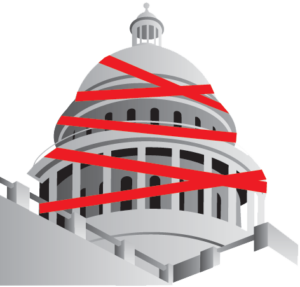Why Business Organizations Oppose the Misleading Rx Measure
Controversial activist Michael Weinstein is behind a misleading initiative proposed for California’s November 2016 ballot. The measure would prohibit the state from entering into contracts to purchase prescription drugs unless the prices are the same or lower than the special discounts provided to the U.S. Department of Veterans Affairs (VA) and our nation’s veterans. The measure would likely invalidate existing contracts the state has negotiated with pharmaceutical manufacturers, increasing state costs for prescription drugs by tens of millions of dollars. It would impose artificial government price setting on private sector companies, stifling investments in California-based research and innovation. The only thing the measure would actually guarantee is millions of dollars in taxpayer costs for more state government bureaucracy, red tape and potential lawsuits.
The measure attempts to impose government price controls on the private sector, which would set a bad precedent for all businesses and the economy.
Passing a state law that attempts to artificially set government price controls on prescription drugs is just the start. It could embolden advocates of price controls to expand these policies to other sectors of the health care industry, or other businesses.
The measure is unworkable and could cost taxpayers millions in bureaucracy, red tape and potential lawsuits.
The measure’s language is legally flawed, unenforceable and at odds with how the sale and purchase of prescription drugs (or any other products) work in the real world.
For starters, the measure contains absolutely no language for how it is to be implemented. It could lead to litigation from numerous parties, including the state, patient advocacy organizations, manufacturers and even federal agencies affected by the measure – wasting millions of taxpayer dollars and taking years to resolve.
 Another potential consequence of this measure could be that the state is forced to invalidate many existing prescription rebate agreements it has with pharmaceutical manufacturers if the net price of those agreements is higher than the VA price. This would result in the loss of tens of millions of dollars in rebates now provided by manufacturers to the state, leading to higher costs for prescriptions.
Another potential consequence of this measure could be that the state is forced to invalidate many existing prescription rebate agreements it has with pharmaceutical manufacturers if the net price of those agreements is higher than the VA price. This would result in the loss of tens of millions of dollars in rebates now provided by manufacturers to the state, leading to higher costs for prescriptions.
Lastly, as recently noted by the state’s independent Legislative Analyst’s Office,1 many VA prescription drug prices are not publicly available. So the state may not even be able to obtain the basic information it would need to begin to implement this unworkable measure.
Given these significant flaws, the measure would likely result in more bureaucracy, red tape and potential lawsuits.
The measure only applies to a limited number of state programs, but it would negatively impact both government and private sector.
The ballot initiative does not apply to more than 35 million Californians, including 20 million Californians covered by employer-sponsored or private sector plans.
To the extent that some state programs could possibly purchase prescriptions at significantly reduced prices, this measure would increase drug prices for millions of private sector health care consumers through a cost-shift.
The measure could have a chilling effect on cutting edge medical research and cures.
If California and other states pass laws that seek to extend VA prices on innovative drugs, it would reduce revenues and thus limit future investments in the research and development of new drugs and cures.
Limiting investment could cause medical research facilities in California to lose funds for cutting edge research, resulting in lost California jobs and fewer cures.
According to the Tufts Center for the Study of Drug Development,2 on average, it costs pharmaceutical companies $2.6 billion to do the years of research and tests necessary to develop a single new drug.
“Drug price controls would stifle the introduction of valuable new drugs, because innovators will spend less pursuing new drugs.”3
Darius Lakdawalla
Professor of Pharmaceutical Development and Regulatory Innovation
USC School of Pharmacy
Importance of California Life Sciences Research and Development
In 2015, there were 1,235 new drugs in California’s drug development pipeline.
- 366 to treat cancer
- 151 for infectious disease
- 109 to address central nervous system conditions
California’s life sciences industry generates nearly one million jobs, with 281,000 people being directly employed in the industry.4
There were a total of 3,111 clinical trials in California in 2013, with 125,613 clinical trial participants.
-
http://www.scpr.org/news/2015/12/23/56415/will-calif-ballot-measurelower-drug-prices/
-
PhRMA adaptation based on Dimasi JA. Cost of developing a new drug. Tufts Center for the Study of Drug Development (CSDD). R&D Cost Study Briefing; November 18, 2014. Boston Mass.: CSDD. Accessed November 2015.
-
(http://www.nytimes.com/roomfordebate/2015/09/23/should-thegovernment-impose-drug-price-controls/drug-price-controls-end-upcosting-patients-their-health)
-
California Life Sciences Association (CLSA), “California Life Sciences Industry: 2016 Report”, http://califesciences.org/2016report/ . Published November 2015. Accessed December 17, 2015. Page 2.
DOWNLOAD PDF

